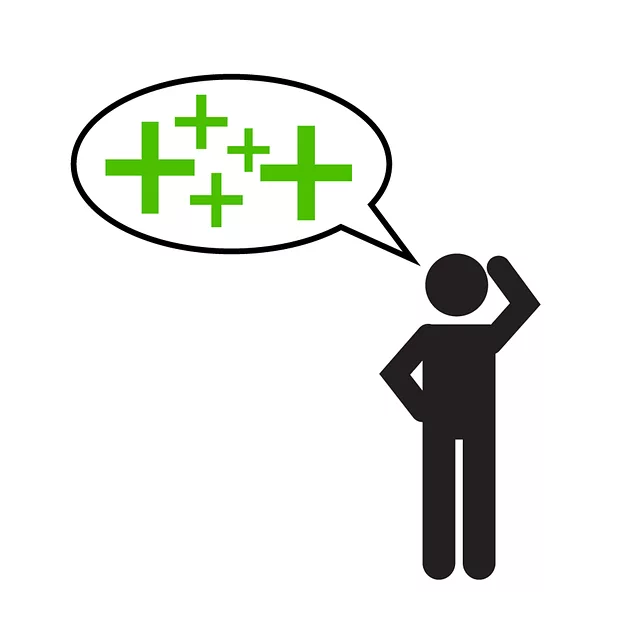Overcome Fears & Phobias: Kaiser CBT, Exposure Therapy & Cognitive Restructuring
Kaiser Cognitive Behavioral Therapy (CBT) is an effective approach to overcoming fears and phobias b…….
In today’s rapidly evolving mental health landscape, Kaiser Cognitive Behavioral Therapy (KCBT) has emerged as a powerful and evidence-based approach, offering transformative solutions for individuals struggling with various psychological disorders. This article aims to delve into the intricacies of KCBT, exploring its origins, principles, global impact, and future potential. By understanding this therapeutic modality, we can appreciate its significance in improving mental well-being on a global scale.
Kaiser Cognitive Behavioral Therapy is a form of psychotherapy that focuses on identifying and changing negative thought patterns and behaviors. It is based on the principle that our thoughts, feelings, and actions are interconnected, and by modifying cognitive processes, one can achieve positive behavioral changes. KCBT combines elements of cognitive therapy, which emphasizes understanding and challenging negative thoughts, with behavioral therapy, which focuses on modifying observable behaviors.
The core components of KCBT include:
Cognitive Restructuring: This involves identifying and challenging irrational or distorted thoughts and replacing them with more realistic and adaptive ones. Techniques like Socratic questioning, reframing, and cognitive experimentation are employed to achieve this.
Behavioral Activation: Encourages individuals to engage in activities that they may have avoided due to their mental health condition. By increasing participation in rewarding activities, KCBT aims to improve mood and reduce symptoms of depression or anxiety.
Coping Strategies: Teaches clients effective strategies to manage emotions, handle stress, and cope with difficult situations. This includes relaxation techniques, problem-solving skills, and mindfulness practices.
Goal Setting: Helps patients set achievable goals to work towards, providing a sense of direction and motivation. These goals are specific, measurable, attainable, relevant, and time-bound (SMART).
KCBT has its roots in the cognitive behavioral therapy (CBT) movement that gained momentum in the mid-20th century. Pioneered by psychologists like Aaron T. Beck and Albert Ellis, CBT laid the foundation for understanding the connection between thoughts, feelings, and behaviors. Over time, this approach evolved, and the ‘Kaiser’ element was added to signify its integration within the Kaiser Permanente healthcare system, a large not-for-profit health plan in the United States.
The significance of KCBT lies in several key aspects:
Evidence-Based Efficacy: Numerous studies have demonstrated the effectiveness of KCBT in treating various mental health disorders, including depression, anxiety disorders, post-traumatic stress disorder (PTSD), and substance abuse.
Accessibility: By integrating this therapy into primary care settings, as done by Kaiser Permanente, KCBT becomes more accessible to a broader population, reducing barriers to mental healthcare.
Personalized Approach: KCBT is tailored to individual needs, making it adaptable for diverse cultural backgrounds and specific conditions.
Cost-Effectiveness: This therapy has been shown to be cost-effective in the long term, leading to reduced healthcare expenditures related to recurrent psychiatric hospitalizations and medication management.
The impact of KCBT extends far beyond its origins in the United States, with growing adoption worldwide. Its evidence-based nature and accessibility have made it an attractive therapeutic option for many countries:
Europe: In countries like the UK and Germany, KCBT has been integrated into national healthcare systems, ensuring its availability to a large portion of the population. For instance, the National Health Service (NHS) in the UK offers Cognitive Behavioral Therapy (CBT) as a first-line treatment for common mental health disorders.
Asia: Japan and South Korea have also embraced KCBT, adapting it to their cultural contexts. Local researchers have contributed to its refinement, making it culturally sensitive and effective.
Low-Income Countries: Organizations like the World Health Organization (WHO) promote evidence-based interventions, including CBT, as cost-effective strategies for improving mental health in resource-limited settings.
Integration with Digital Health: The rise of digital health platforms and mobile applications offers new avenues for delivering KCBT. Telehealth services, in particular, have gained popularity during the COVID-19 pandemic, ensuring continued access to therapy despite physical distancing restrictions.
Cultural Adaptation: There is a growing emphasis on adapting KCBT to diverse cultural contexts, ensuring its effectiveness across different populations. This involves translating therapeutic techniques and tools while preserving their core principles.
Collaboration with Other Therapies: KCBT is increasingly being combined with other evidence-based approaches, such as mindfulness-based interventions and motivational interviewing, to enhance treatment outcomes.
Preventive Measures: There is a growing trend to use KCBT as a preventive tool, targeting at-risk individuals or those experiencing mild symptoms, to prevent the escalation of mental health issues.
The economic landscape of KCBT involves several key considerations:
Healthcare Spending: Governments and healthcare organizations worldwide are investing significantly in mental health services, driving the demand for evidence-based therapies like KCBT. This trend is expected to continue as the global burden of mental disorders increases.
Private Sector Involvement: Private healthcare providers and insurance companies play a substantial role in funding and delivering KCBT, particularly through managed care organizations.
Market Growth: The global cognitive behavioral therapy market is projected to grow at a steady rate due to rising awareness, increased adoption by healthcare systems, and the growing need for cost-effective mental health solutions.
KCBT’s economic impact extends beyond direct healthcare costs:
Productivity and Employment: Improved mental well-being through KCBT can lead to higher productivity and reduced absenteeism in the workforce, benefiting businesses and the overall economy.
Reduced Healthcare Costs in the Long Term: By preventing relapses and reducing the need for more intensive or expensive treatments, KCBT contributes to lower healthcare expenditures over time.
Technology has revolutionized the delivery of KCBT, enhancing its accessibility and flexibility:
Online Therapy Platforms: Digital platforms offer real-time access to therapy sessions, allowing patients to receive treatment from the comfort of their homes. This is particularly beneficial for individuals with limited mobility or those living in remote areas.
Mobile Applications: Dedicated apps provide tools and resources for self-monitoring, cognitive restructuring exercises, and coping strategies between sessions. These apps can also deliver personalized feedback and reminders, improving patient engagement.
Artificial Intelligence (AI): AI-driven systems have the potential to personalize treatment plans by analyzing patient data and providing tailored interventions. They can also assist in scheduling appointments and monitor patient progress.
The future of technology in KCBT holds immense promise:
Virtual Reality (VR) Therapy: VR can create immersive therapeutic environments, making exposure therapy more engaging and effective for conditions like PTSD.
Machine Learning Applications: Machine learning algorithms can analyze large datasets to identify patterns and predict treatment outcomes, enabling personalized treatment recommendations.
Smartphone Integration: Advanced smartphone sensors can provide real-time data on patient behavior and physiological responses, offering valuable insights for therapists.
The development and delivery of KCBT are shaped by various policies and regulations:
Mental Health Parity Laws: These laws ensure that mental health services, including therapy, receive the same level of insurance coverage as medical or surgical services. This promotes accessibility and affordability.
Data Privacy Regulations: With the increasing use of digital platforms for KCBT delivery, data privacy laws like GDPR in Europe and HIPAA in the US are crucial to protect patient information.
Licensing and Certification: Therapists practicing KCBT must adhere to specific licensing requirements and maintain professional certifications to ensure competent delivery of services.
Policies and regulations play a critical role in shaping:
Accessibility: Regulations that mandate mental health coverage encourage insurance providers to offer plans with comprehensive CBT coverage, making therapy more accessible.
Standardization: Licensing standards ensure that therapists delivering KCBT meet specific educational and clinical proficiency requirements, maintaining treatment quality.
Research and Innovation: Funding guidelines and research incentives can drive the development of new KCBT techniques and technologies, fostering innovation in mental health care.
Despite its proven effectiveness, KCBT is not without challenges:
Stigma and Misunderstanding: Stigma surrounding mental health issues can deter individuals from seeking therapy, and misconceptions about CBT as a quick fix may lead to unrealistic expectations.
Limited Access in Some Regions: In underserved areas or low-income countries, the availability of trained therapists and integrated healthcare systems may hinder access to KCBT.
Time Constraints: The structured nature of KCBT may not accommodate complex cases that require more flexible approaches or extended treatment periods.
Addressing these challenges requires a multi-faceted approach:
Public Awareness Campaigns: Educating the public about mental health, dispelling myths, and promoting understanding can encourage individuals to seek professional help.
Invest in Mental Health Infrastructure: Governments should allocate resources to strengthen mental healthcare systems, including training more therapists and expanding access to technology-assisted therapies.
Adapt Therapy for Diverse Populations: Customizing KCBT to suit cultural and regional contexts ensures its effectiveness across diverse communities.
Encourage Hybrid Approaches: Combining KCBT with other therapeutic modalities can cater to a broader range of patient needs, addressing the limitations of time and case complexity.
The following case studies highlight successful implementations of KCBT:
Depression in Young Adults: A study conducted at a university campus used KCBT as an intervention for students struggling with depression. The program included individual therapy sessions and group skills training, resulting in significant improvements in depressive symptoms, which were sustained at a 6-month follow-up.
PTSD in Veterans: The Department of Veterans Affairs (VA) in the US implemented a KCBT program for veterans with PTSD. Through structured group therapy sessions, participants experienced reduced symptom severity and improved quality of life, demonstrating the effectiveness of this approach in a specialized population.
Anxiety in Children: A community-based program integrated KCBT into schools to address anxiety disorders in children. The initiative involved training teachers and school counselors in CBT techniques, leading to decreased anxiety levels among students and increased engagement in classroom activities.
These case studies offer valuable insights:
Cultural Sensitivity: Adapting KCBT to cultural norms and beliefs significantly enhances its acceptability and effectiveness, as seen in the veteran’s program.
Community Engagement: Involving community healthcare workers or school personnel in delivering therapy can improve access and outcomes, particularly for hard-to-reach populations.
Sustainability of Outcomes: Follow-up sessions or booster programs are essential to maintaining treatment gains, as demonstrated by the young adults’ depression study.
The future of KCBT holds exciting possibilities:
Cultural Diversity Research: Further research on culturally adapted KCBT is needed to ensure its effectiveness across diverse populations worldwide.
Integration with Telehealth: The expansion of telehealth services will continue to shape the delivery of KCBT, making it more accessible and convenient for patients.
AI and Machine Learning Applications: As technology advances, AI-driven interventions and personalized treatment planning will play a significant role in enhancing KCBT’s impact.
Transcultural CBT: This approach combines elements of traditional CBT with cultural adaptation strategies to create a universally appealing therapy that respects cultural diversity.
Digital Health Ecosystems: The development of integrated digital health platforms will enable seamless delivery of KCBT, including online therapy, mobile apps, and virtual reality components.
Cultural Competence Training: Healthcare providers should undergo regular training to enhance their cultural sensitivity, ensuring effective delivery of KCBT across diverse communities.
Collaboration and Partnerships: Building partnerships between mental health organizations, healthcare systems, and technology companies can drive innovation and improve access to KCBT.
Longitudinal Research: Continued research is essential to understand the long-term effects of KCBT and identify optimal treatment protocols for various conditions.
Kaiser Cognitive Behavioral Therapy has emerged as a powerful tool in the mental health arsenal, offering effective and accessible solutions to a wide range of psychological disorders. Its global impact is evident in its integration into healthcare systems worldwide, reflecting its proven efficacy and cost-effectiveness. As technology advances and cultural understanding deepens, KCBT is poised to play an increasingly vital role in improving mental well-being on a global scale.
By addressing challenges, embracing technological advancements, and fostering collaborations, the future of KCBT looks promising. This therapy continues to evolve, ensuring that its benefits reach those who need it most, ultimately contributing to a healthier and more resilient global community.
What is the main difference between traditional psychotherapy and KCBT?
Traditional psychotherapy may take a broader approach, exploring various aspects of a client’s life, while KCBT focuses specifically on identifying and changing negative thought patterns and behaviors.
How effective is KCBT for treating depression?
Numerous studies have demonstrated KCBT’s effectiveness in treating major depressive disorder. It has been shown to produce substantial improvements in symptom severity and can be a first-line treatment option or an effective adjunct to medication.
Can KCBT be used for children and adolescents?
Absolutely. KCBT is increasingly being used for younger populations, with adapted techniques tailored to their developmental stage. Research supports its effectiveness in treating anxiety disorders, depression, and other common mental health issues in children and adolescents.
What role does technology play in modern KCBT practice?
Technology enables more accessible delivery of KCBT through online therapy platforms, mobile apps, and virtual reality. It also facilitates data collection and analysis for personalized treatment planning.
How can I find a qualified therapist who practices KCBT?
You can start by asking your primary care physician for a referral or searching for licensed therapists in your area who specialize in cognitive behavioral therapy. Many online platforms now list therapists with specific training and certifications, making it easier to find a suitable practitioner.

Kaiser Cognitive Behavioral Therapy (CBT) is an effective approach to overcoming fears and phobias b…….

Kaiser Cognitive Behavioral Therapy (KBT) is a structured, evidence-based approach that identifies a…….

Kaiser Cognitive Behavioral Therapy (CBT) is a structured psychological treatment that identifies an…….